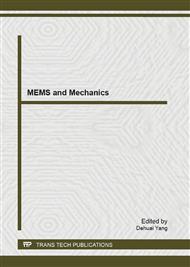p.584
p.590
p.596
p.602
p.609
p.616
p.621
p.627
p.630
Analytic Solution for Microscale Poiseuille Flow Based on Super-Burnett Equations
Abstract:
The previous studies show that the transverse distribution of pressure and temperature in microscale Poiseuille flow cannot be predicted by Navier-Stokes equation with the slip boundary condition. In this paper, we analyzed the planar microchannel force-driven Poiseuille flow by high order continuum model. The super-Burnett constitutive relations were used and the nonlinear ordinary differential Equations of higher-orders were obtained by the hypothesis of parallel flow. With a perturbations theory, we linearized the equations and obtained the analytic solutions. The results show that the solutions can capture the temperature dip which is the same as the DSMC result. However, we also find that the temperature profile near the wall does always not match with the DSMC result. Especially, the difference in the qualitative exists when the Knudsen number is large enough. The non-equilibrium effect near the wall such as Knudsen layer can not be described entirely by continuous model even with high order constitutive relations and this confines the extension of the continuous model such as super-Burnett one.
Info:
Periodical:
Pages:
609-615
Citation:
Online since:
June 2013
Authors:
Price:
Сopyright:
© 2013 Trans Tech Publications Ltd. All Rights Reserved
Share:
Citation:


